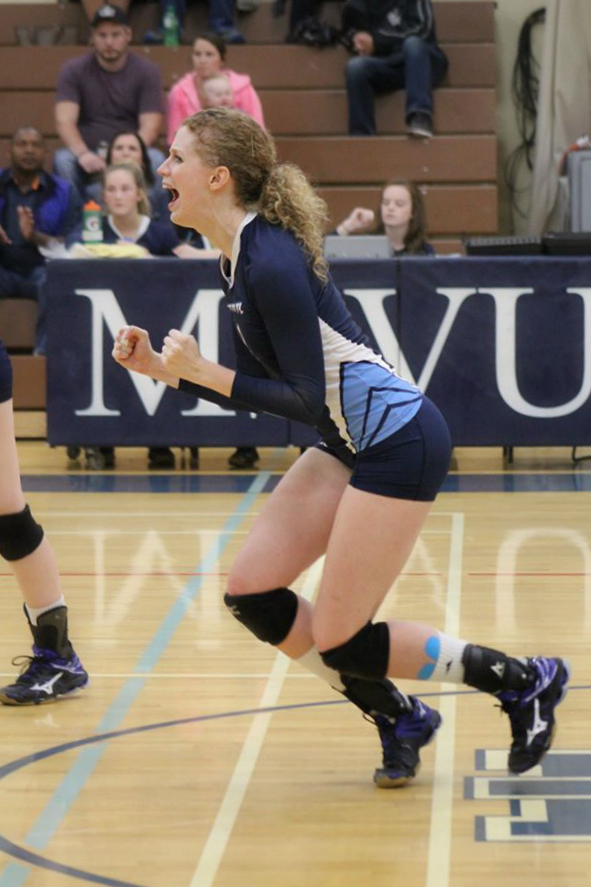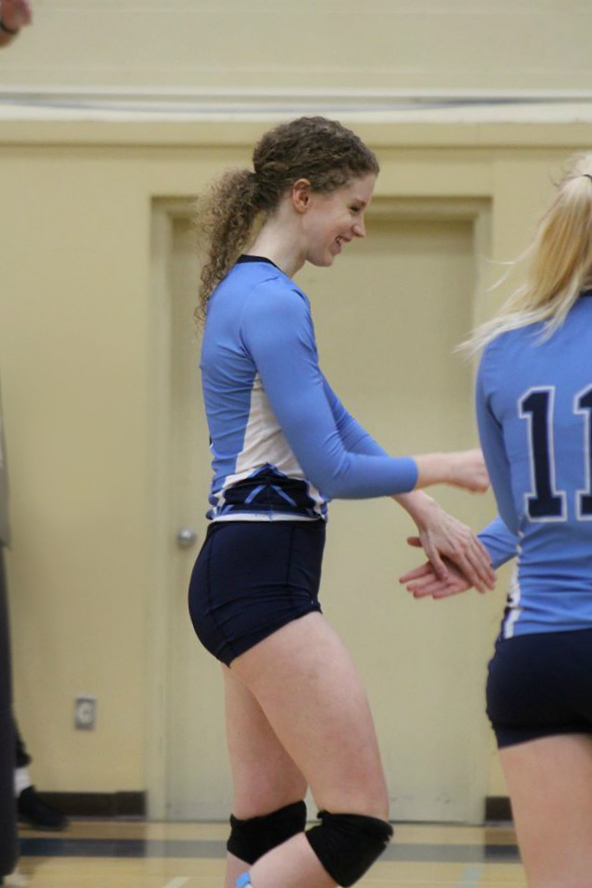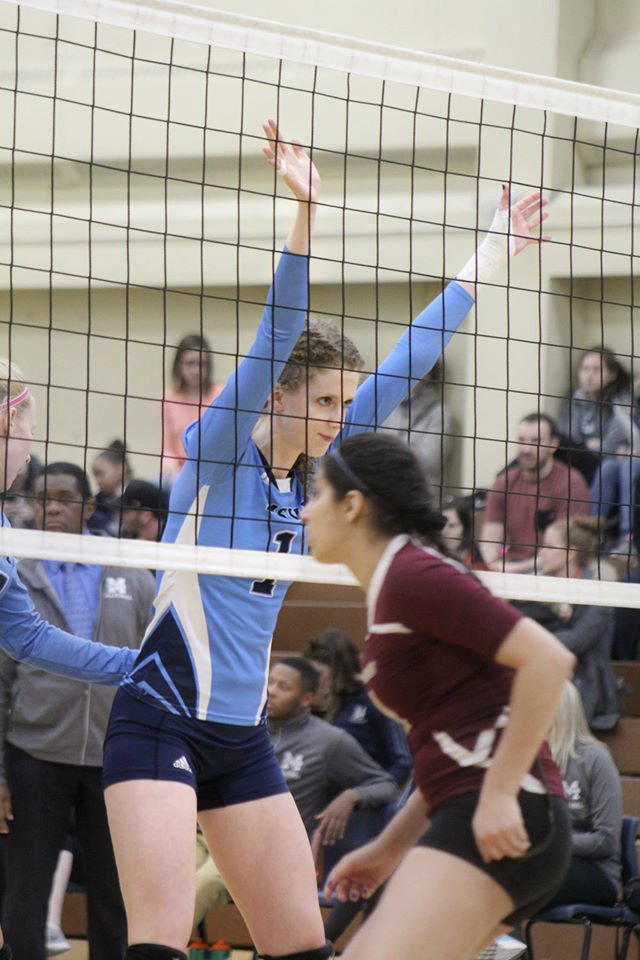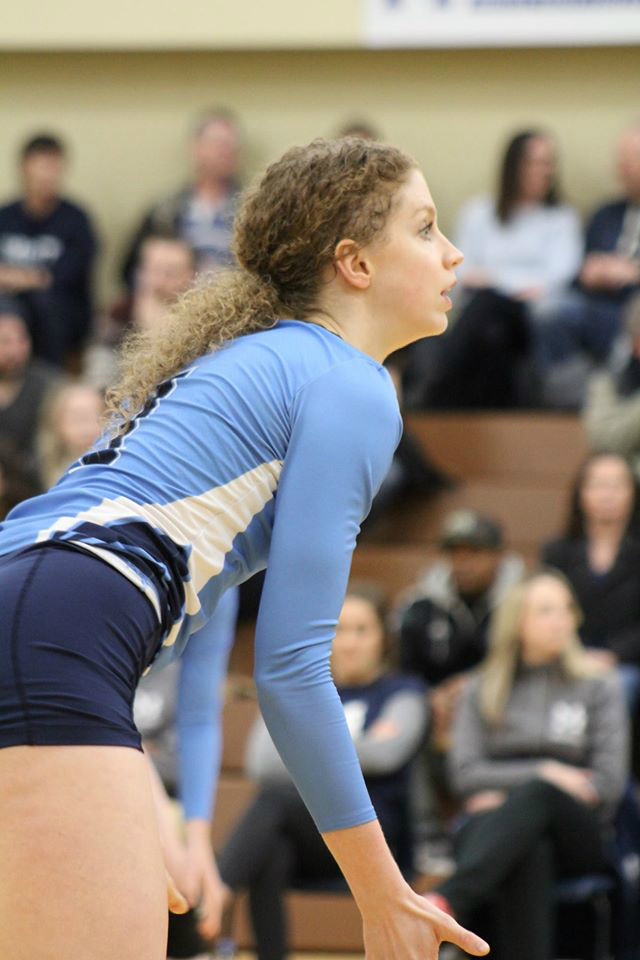Jane Delahunt fell in love when she was 11-years-old. Volleyball has been woven into the fabric of who she is since then. A former Dalhousie Tiger and Mount Allison Mountie, she is now in her 5th year of University volleyball with the Mount Saint Vincent Mystics. A Bachelor of Education student, a friend and a daughter but from an onlooker, most of all, a volleyball player. When you are 6 foot 1 and look the part, a sport can often define you.
What happens to a young woman when such an intrinsic part of who she is becomes threatened?
Concussions were that threat for Jane.
Strains and tears can be common place in volleyball. The pain associated with a concussion is equal parts physical and emotional.
Jane’s first concussion came when a teammate accidently elbowed her in the head while completing a block. While volleyball doesn’t have the reputation of a contact sport, it’s often friendly fire on your own side of the net that can inflict damage.
“I immediately felt disoriented, dizzy and got an instant headache. This concussion was minor; after two weeks of headaches, sensitivity to light and missing school, I was back to 100 per-cent.”
Such is the case with many athletic injuries, the 2nd time the injury occurs is when the lasting impact is felt.
There’s no glorious tale surrounding Jane’s next concussion.
“I was sleeping in a small, unfamiliar bed under a wall-mounted cabinet and when I rolled over in my sleep, I hit my head on the bottom of the cabinet. I knocked myself unconscious and woke up in the morning with a severe headache and no memory of what had happened.”
For the next 6 weeks Jane would experience drastic change in her lifestyle,
“I underwent brain scans to make sure that there was no bleeding in my brain. The constant headaches felt like wearing a helmet that is too small while a lava-lamp-like sensation of pain swarms through your head. Psychologically, I lost my sense of self”.
This time was spent living back at her parent’s home where they could closely care for her. Lying in the dark, alone, with nothing more than the low volume hum of a podcast to keep her company. Even her parents while emotionally close, tried to make sure Jane wasn’t over stimulated by common noise or light,
“The only time I had visitors was when my parents would bring me meals. I remember begging them to stay in the room just a bit longer because I was lonely”.
Jane was put on a low-dose anti-depressant for two months to combat daily headaches along with anti-inflammatory drugs to manage pain.
This is not the type of injury that you should “rub some dirt on” and get back out there.
Do not allow societal expectations of athletes being “warriors”, convince you that a traumatic brain injury can be “played through”.
Patience is a virtue. That virtue tested Jane.
Monthly appointments with her neurologist gave her optimism at times but was also when she reached her bottom.
“I remember trying to negotiate with my neurologist during every visit, always wanting to be cleared to do a bit more. I was desperate to talk him into letting me live my life again, even though we both knew that it was up to my brain's healing to dictate my recovery.”
In July 2016 Jane got the news she wanted. She was concussion free,
“I cried with relief when I left that appointment. There were moments throughout my recovery that it felt like I was never going to get beyond this injury so having my neurologist tell me I was officially concussion-free was overwhelming”
Jane is left with few residual symptoms now. Most she does fight against are emotional.
- Paranoia about re-injuring my head
- Social Anxiety
- Depression
- Self hate
These were just a few challenges Jane was left with during her recovery, and post-recovery periods.
“I was hit in the back of the head by a teammate's serve in practice last month. The ball was not hit hard and I knew logically that the impact was not going to do any real damage. However, my body's instincts took over and I had to excuse myself from practice to have a panic attack in the equipment room”
Jane’s words tell her story better than I can, to conclude her story please listen to her pull back the curtain on this injury. This is Jane’s response when I asked her specifically about the emotional challenges of this concussion, her support system and what she thought needed to be done to combat concussion in sport.

 Photo Credit - Haley Myatt
Photo Credit - Haley Myatt
“The first three months of dealing with my concussion was the most emotionally challenging period of my life. I laid in bed for weeks while I felt myself gaining weight and losing muscle mass. I went from being at my peak as an athlete to not feeling like an athlete at all. I struggled with self-hate and remember wholeheartedly believing that I was never going to feel like myself again.
One of the most emotionally challenging aspects of this injury was that is an invisible injury. Explaining and justifying it to other people was difficult and exhausting. I did not have any scars to show and I was not limping around on crutches. I was so tired of the recovery process that I wrongfully assumed that my friends, family, employers and coaches were also fed up with having to be patient with me.
I credit my parents Nancy and David most my successful recovery. I moved into their house for the first six weeks of recovery and they cared for me around the clock. They were, and have always been, relentlessly supportive.
I was not an easy person to deal with during my recovery. I felt insecure, hopeless and disconnected from who I was and because of that I would find myself lashing out at those who were closest to me. Looking back, I think that the depression that the concussion brought on made me feel that I was not worthy of the unconditional love and patience that the people in my life were showing me. Those people refused to give up on me which, as clichéd as it sounds, pushed me not to give up on myself. I will always be grateful to them for that.
My current teammates and coaches were also very supportive. I was not at my best physically or psychologically when I joined this team and they accepted me with open arms anyway.
Non-contact sports like volleyball do not place enough importance on concussion awareness because the nature of our sport does not lead to as many head injuries as are seen in contact sports. Education is the most important element that athletes/teams/organizations should focus on in terms of concussion prevention.
As my story and many others show, playing a non-contact sport does not exempt you from being at risk for a concussion. Many athletes are quick to dismiss an accidental bump on the head. I empathize with this mindset; no one wants to sit out of a practice or work because they may have an invisible, difficult-to-diagnose, sometimes asymptomatic injury.
If we can educate our athletes about the severity of concussions and their warning signs, we will hopefully develop a healthier and more proactive culture surrounding concussions in our sport.
Also, if an organization has access to baseline concussion testing, that can be a fantastic tool in concussion diagnosis.
In terms of the reaction to concussions, I think they should be taken extremely seriously. There is no room for guessing or errors when it comes to a brain injury. The potential lifelong consequences of playing through a concussion are just not worth it.”

 Photo Credit - Haley Myatt
Photo Credit - Haley Myatt